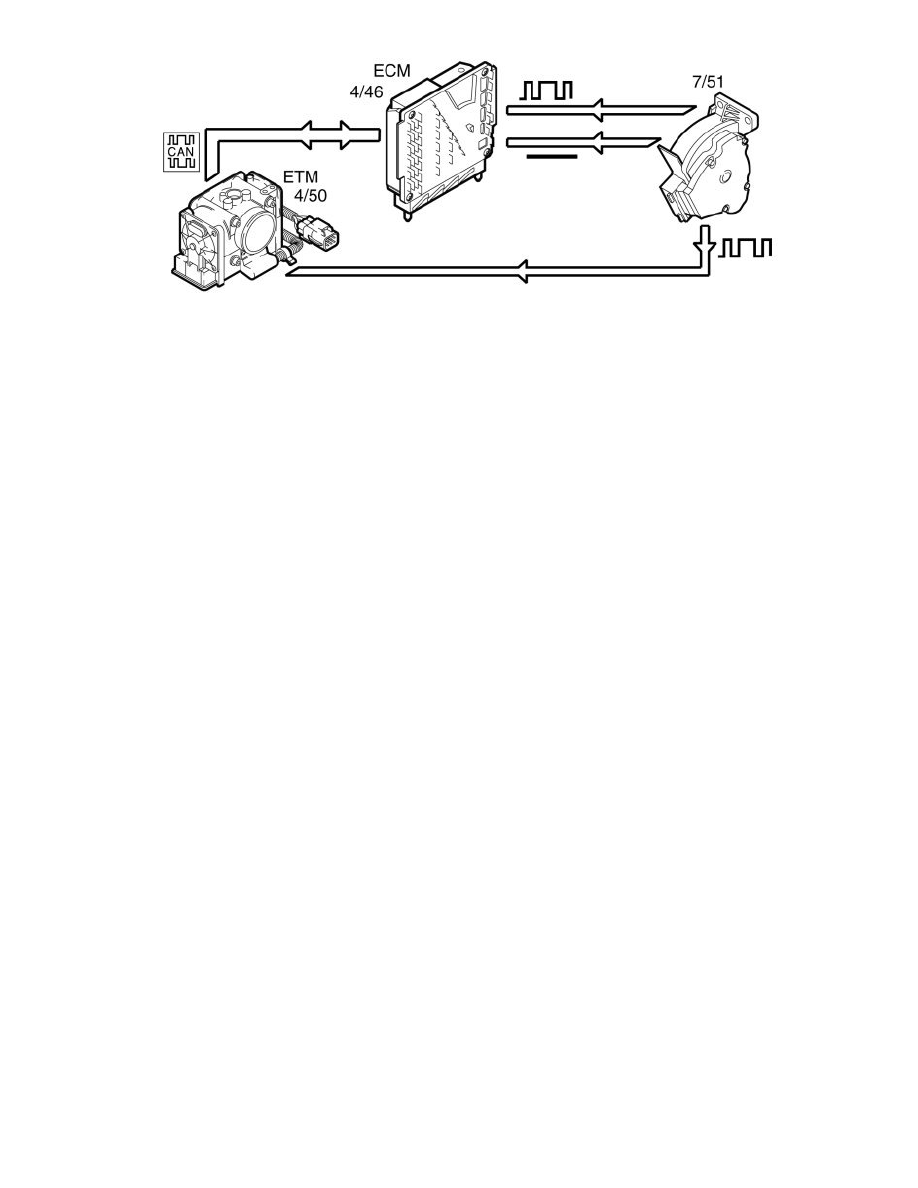S80 T6 Executive L6-2.8L Turbo VIN 90 B6284T (2001)

The main task of the throttle unit system is to regulate the amount of air to the engine from the driver's demands. The driver requests a certain toque from
the engine by depressing the accelerator pedal. This information is received by the Engine control module (ECM) that, together with the torque request
from other functions, calculates a desired throttle angle.
The torque request from other functions means that there are loads that the system compensates for without the driver knowing it, for example, when the
AC compressor is to be switched on, the throttle needs to be opened to compensate for the extra load that is placed on the engine. If the system does not
do this, the engine speed would drop and the torque out on the drive shaft would be reduced every time the AC compressor was switched on, and
increase when switched off.
The Engine control module (ECM) sends the request about the desired throttle angle to the Electronic throttle module (ETM) via CAN. The Electronic
throttle module (ETM) fulfils the desired throttle angle and sends the information about the current throttle position back to the Engine control module
(ECM) via CAN.
The Electronic throttle module (ETM), must not, under any circumstances, start to regulate the throttle position from its own request, but must always
fulfill the desired throttle angle from the Engine control module (ECM). All signal transfers between the Engine control module (ECM) and Electronic
throttle module (ETM) occur via CAN. If there is a problem with CAN communication, the information about the position of the accelerator pedal and
the brake pedal is available via direct contact with the relevant sensor. This means that the vehicle can be driven, but with reduced driveablity. In this
position, the Electronic throttle module (ETM) only controls the throttle position after the accelerator pedal position, the throttle unit does not know
whether the engine is running or not.
The Engine control module (ECM) and Electronic throttle module (ETM) carry out checks and plausibility checks continuously. If a fault is detected, the
system carries out corrective actions, such as to activate a suitable reconfiguration and store diagnostic trouble codes (DTCs).
For further information about which tests are carried out, see diagnostic trouble code (DTC) information for the relevant diagnostic trouble code (DTC).
Below is general information about diagnostic trouble codes (DTCs) and a more detailed explanation regarding reconfigurations in the throttle system.
General information
When the Electronic throttle module (ETM) detects that the communication to the Engine control module (ECM) is interrupted in any way or broken,
faults are stored in the Electronic throttle module (ETM). The information about these faults are sent to the Engine control module (ECM) as soon as
communication is restored on the CAN. This means that the Engine control module (ECM) stores the diagnostic trouble codes (DTCs) for these faults as
soon as the Electronic throttle module (ETM) delivers the faults. This, in turn, means that it is at this point that the frozen values for the diagnostic
trouble codes (DTCs) are saved. For the Electronic throttle module (ETM) this means that the frozen values will be from a point in time after the
diagnostic trouble code (DTC) first occurred.
For certain fault-tracing it is recommended that the ignition is switched off and switched on twice before erasing the diagnostic trouble codes (DTCs).
This depends on the diagnostic trouble codes (DTCs) being generated according to the command from the Electronic throttle module (ETM), but as only
the Engine control module (ECM) is erased, the Electronic throttle module (ETM) must be switched off completely (powerless) for its memory to be
entirely erased. This must be carried out before the vehicle is test driven, otherwise the fault can be recreated in the Engine control module (ECM).
For the Engine control module (ECM) and Electronic throttle module (ETM) to be completely switched off the following must be carried out:
-
Ignition off, then wait 3 minutes for the main relay/system relay to release the voltage supply to the Electronic throttle module (ETM) among other
things.
-
Then switch the ignition on and off again.
-
Wait a further 3 minutes. If the engine cooling fan is running, wait a further 2 minutes after the engine cooling fan has stopped, to ensure that the
Electronic throttle module (ETM) is switched off correctly.
Reconfigurations
A CAN or the throttle related fault can result in both the Engine control module (ECM) and the Electronic throttle module (ETM) switching to the
reconfiguration mode (limp home). This mode is maintained for the rest of the operating cycle in which the fault occurred and in all following cycles
where the fault is still present.
Depending on the detected type of fault, the control modules can assume different levels of reconfiguration. Reconfiguration covers everything from
preventing cruise control being used due to a temporary break in communication with the cruise control switch, to the Electronic throttle module (ETM)
using a fixed throttle angle and the Engine control module (ECM) controlling the engine speed with the ignition and fuel injection.
In the last named reconfiguration, the engine's idle speed may seem uneven because the Engine control module (ECM) for controlling the speed, closes
the fuel supply to the cylinders individually. This reconfiguration (engine's behavior) must not be confused with an actual problem in driveablity, which
occurred before the reconfiguration.
